A sales report is prepared by an organization’s sales department. It records all the sales-related activities during the process and analyzes the company’s data. It shows the trends in a company’s sales volumes over a certain time period. Sales reports give insight into sales processes and provide the basis for successful sales strategies and operations.
A typical sales report shows.
- The sales volume observed per product or group of products
- Number of accounts contacted, new and old
- Expenses occurring during the promotion and sale of products
Other details are usually added graphically. The reports can show real-time or semi-real-time data depending on the reporting tools used.
Who uses Sales Reports?
Sales reports often identify market opportunities and areas for increasing sales volume. Three primary workforces use these sales reports.
- Sales Executives
- Sales Managers
- Sales Representatives
CEOs and founders also use these reports to plan and strategize business growth, product expansion, and service development.
Benefits of using Sales Reports
A sales report shows the company’s sales geographically, product-wise, or customer-wise. It helps manage sales programs toward financial gains and increased productivity and constantly indicates the team’s performance.
- A sales report can be used to measure the team’s performance. It pinpoints the company’s problems and weaknesses. It can also show the vision of team members who achieved the target and those who did not.
- It can be used to estimate market prices, assess product demand, and determine whether there is a problem. Sometimes, a drop may reveal that the customer’s needs are changing.
- It brings awareness and allows managers to focus more on where they can achieve maximum value and save time by avoiding micromanaging in all areas.
- It shows if the company is meeting its productivity goals and targets.
- It can track time spent by employees on sales activities.
Daily Sales Report
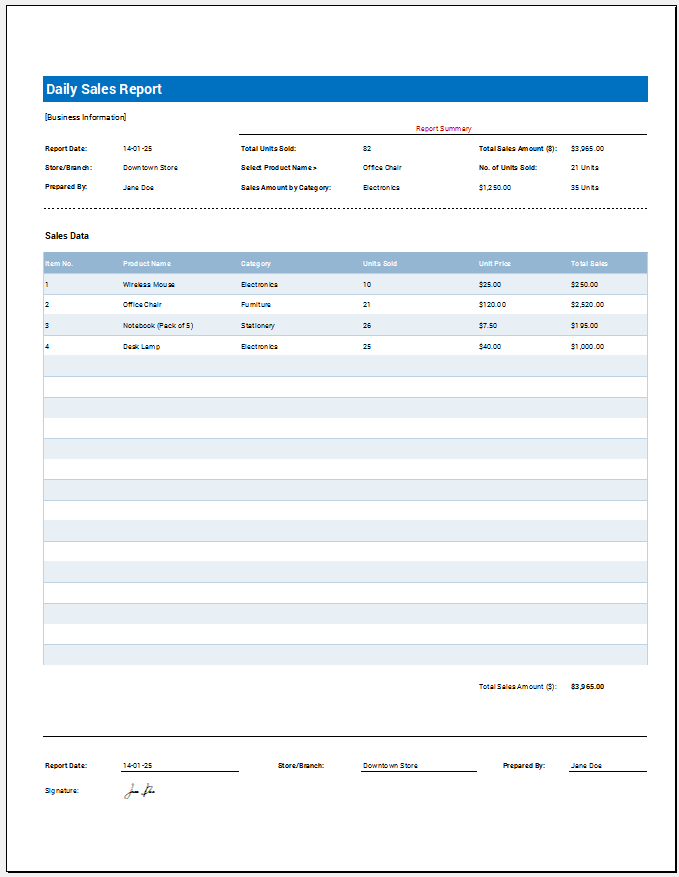
File: Excel (.xlsx) and iPad
Size: 62 KB
Product-Wise Sales Report
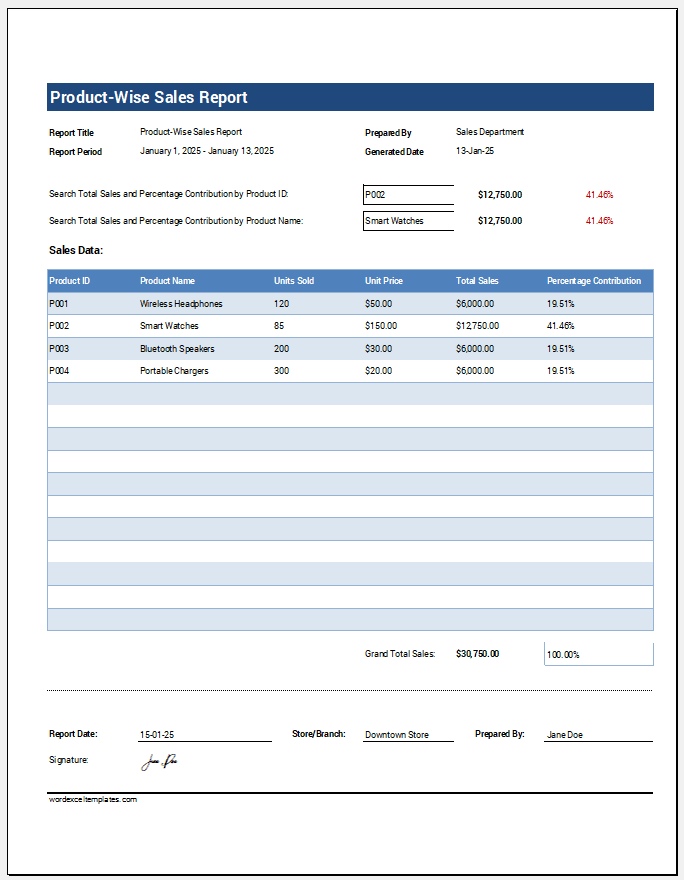
File: Excel (.xlsx) and iPad
Size: 112 KB
Retail Sales Report
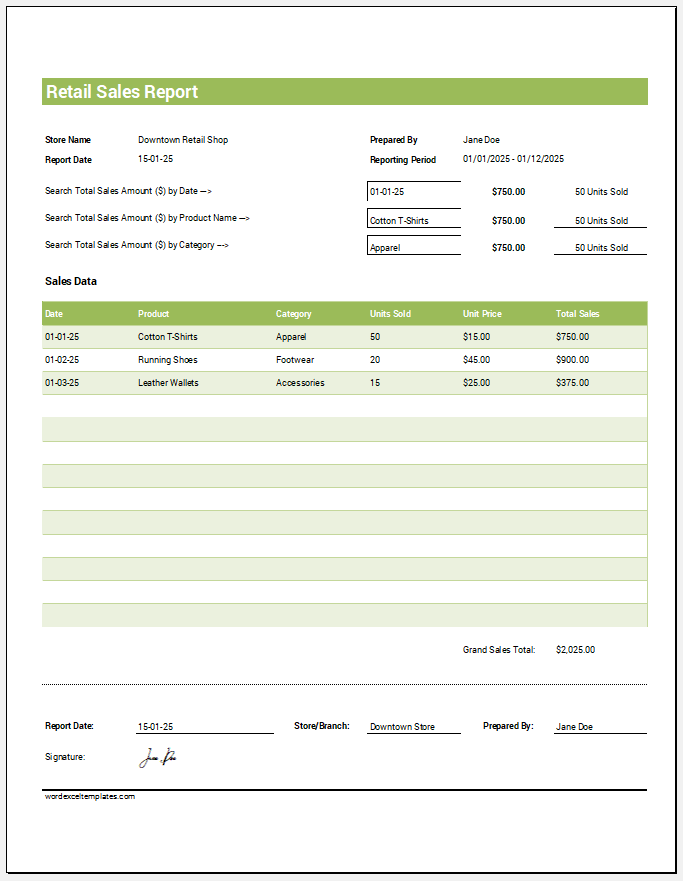
File: Excel (.xlsx) and iPad
Size: 97 KB
How do you create a good Sales Report?
A good sales report is very clear and not overly complex or confusing. It should be understandable, as it is the basis for the company’s success and growth. The language used should be formal, and the report should be proofread.
Different tools are used to make reports. CRM is one tool that has a built-in sales report for tracking data. It gives a real-time view of the sales activities, which helps the company understand its sales performance.
Audience: Knowing what type of information your audience wants to see is very important. A report that interests the marketing team might not appeal to the finance personnel, so it must give an accurate picture of team performance to help them make decisions for their respective departments.
Purpose: The first step is to know the purpose of the report. Understanding the reason for the report helps you select the necessary information for the intended audience.
Research: Proper research should be done. All the data should be gathered and analyzed, including sales reports, expenses, financial statements, production statistics, projections, etc. Sometimes, interviews are conducted for additional data. The report must mention all the methods for finding the required data for credibility.
Analysis: This is the key to the report: interpreting the data and finding ways to use it to help the company. Graphs, tables, and charts might be used for easier understanding. Also, recommendations and conclusions should be made at the end of the report to set long-term goals.
Format: The next step is to format the report after the research and analysis. There might be specific sections, including topics and sub-topics, organized logically.
Forms of Sales Reports
Daily Sales Reports: This report tracks sales metrics daily, such as the number of calls made, the number of representatives who met the clients, etc.
Weekly Sales Reports: A weekly report tracks the number of sales, deals made, and revenue generated in that particular week.
Monthly Sales Reports: A monthly report provides an overview of each sales representative’s monthly activities, including the number of orders and total sales made that month.
Sales Report Templates
The templates show how an organization’s entire sales process is carried out.
- The daily sales report shows the total sales of the products, such as blankets, pillows, etc., categorized by date, sales amount, and taxes.
- The weekly sales report shows the weekly sales record, goal volumes, and variances.
- The monthly sales report for 20XX shows the names of all the clients along with the sales amount. It shows the performance on a monthly, quarterly, and YTD basis and provides a forecast for 20XX.
Daily Sales Report Template
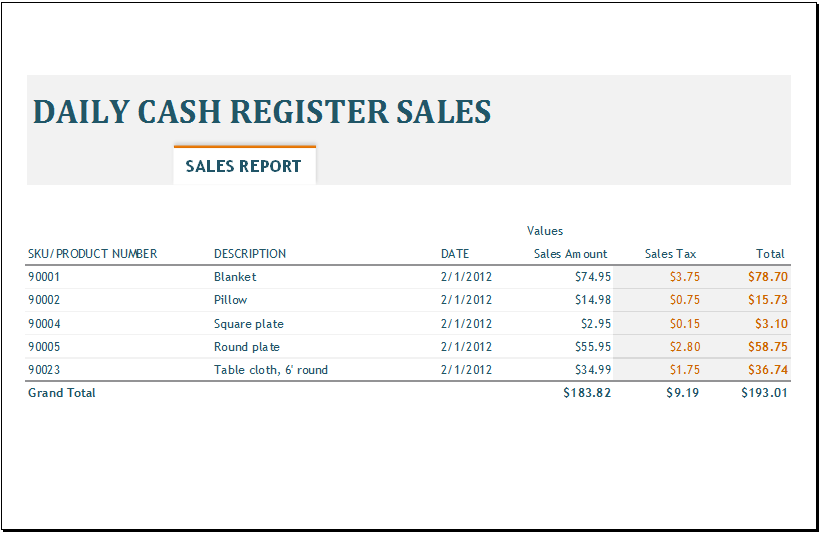
File: Excel (.xlsx) and iPad
Size: 58 KB
Weekly Sales Report Template
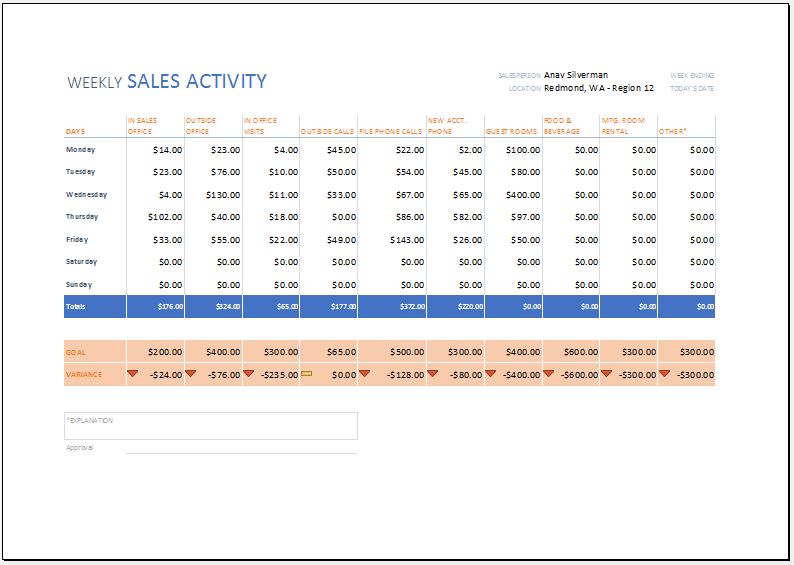
File: Excel (.xlsx) and iPad
Size: 58 KB
Monthly Sales Report Template
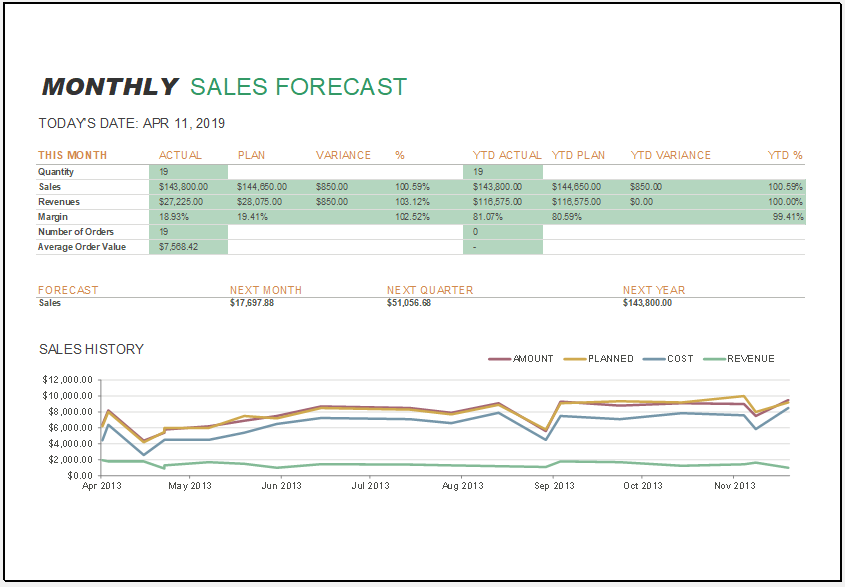
File: Excel (.xlsx) and iPad
Size: 58 KB
- Payroll Budget Sheet Template
- Quarterly Tax Payment Tracker
- Payroll Tracker for Excel
- Delivery Route Optimization Worksheet
- Energy Consumption Monitoring Worksheet
- Return on Investment (ROI) Calculator
- Investment Portfolio Tracker
- Equipment Utilization Worksheet
- Emissions Monitoring Worksheet
- Monthly Utility Consumption Worksheet
- Sales Tax Calculation Sheet
- Fixed Asset Register Template
- Advance Salary Tracker
- Benefits and Deductions Worksheet
- Capital Expenditure Tracker Template